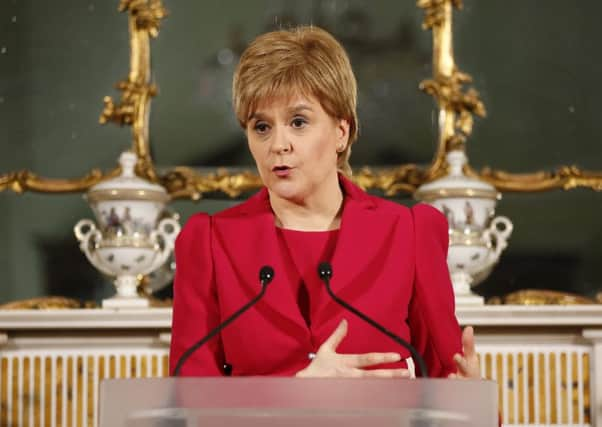Ian Swanson: Is this really Groundhog Day? Well, Yes and No..


The First Minister’s announcement at Bute House on Monday – which took Westminster by surprise – signalled the start of a fresh battle over Scotland’s future.
But much has changed since the first referendum back in September 2014.
Advertisement
Hide AdAdvertisement
Hide AdBrexit is the biggest and most obvious difference and the one which the First Minister is citing as the trigger for Indyref2. In recognition of Scotland’s 62 per cent Remain vote, the Scottish Government drew up a plan which it said could allow Scotland to stay in the single market while the rest of the UK left – but the UK Government ignored it. Ms Sturgeon says she was seeking compromise but hit a “brick wall of intransigence” with the UK Government refusing to move an inch. Arguably that played into the SNP’s hands and allowed Ms Sturgeon to seize the initiative with her bid for a new independence vote.
The old arguments have started again about whether Scotland could somehow continue EU membership or whether it would have to go through a lengthy application process.
And the problem for the Nationalists is that a sizeable chunk of their own supporters back Brexit and will not be enthused by an Indyref campaign based on keeping closer ties with the EU.
The uncertainties around Brexit also affect the economic situation in which the new debate about independence will take place. And falling oil prices have changed the picture for Scotland. Where once the riches of the North Sea held the promise of prosperity, now even a leading SNP economist warns against relying upon any oil revenues in the future.
Advertisement
Hide AdAdvertisement
Hide AdThe political situation has changed too. The decline in the Labour Party’s fortunes both in Scotland and the UK mean the SNP’s dominance is even greater than before – although it no longer has an overall majority at Holyrood.
And the anti-independence parties look unlikely to repeat their 2014 co-operation in the Better Together campaign. Despite coming out as the winners in that referendum, the cross-party effort is seen as a big factor in the decision of traditional Labour voters to desert the party. Even if they agreed independence was a bad idea, Labour politicians throwing in their lot with Tories was a step too far for many. It is difficult to know how an umbrella No organisation would work this time.
MSPs will next week endorse the First Minister’s plan to seek a Section 30 order from Westminster to allow a referendum to take place. It will be difficult for Mrs May to refuse the request outright – it wouldn’t do to be seen trying to block a democratic exercise. But she could insist the referendum does not take place until 2020. That too, however, could play into the SNP’s hands by fuelling resentment at Westminster blocking tactics.
Whatever the date, both the Yes and No campaigns have a lot of work to do between now and then to muster their arguments and ensure they have answers to the many questions people will be asking. Some of it will feel like going over old ground, but hopefully there will also be room for some fresh perspectives and new insights.